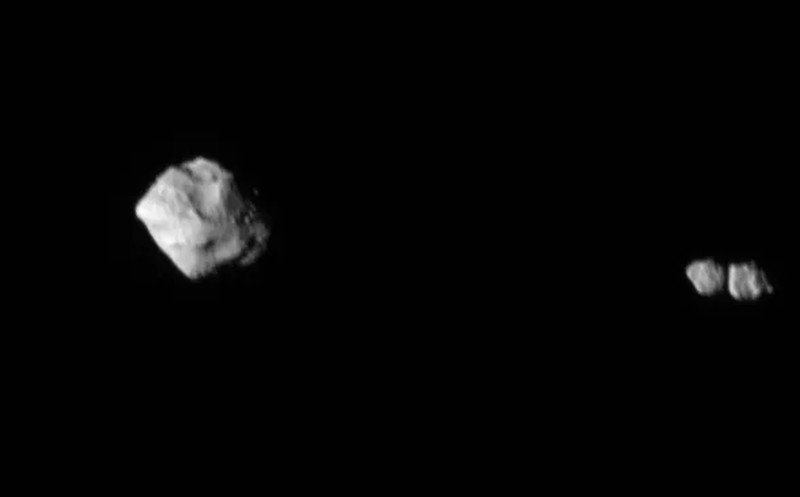
NASA/Goddard/SwRI/Johns Hopkins APL
Good morning. It is November 8, and yes, we’re headed back out to the Lucy mission again. NASA has shared some additional information about an asteroid flyby last week, and there’s more goodness to share.
A few days ago, the Daily Telescope reported that the Lucy spacecraft had found not one but two asteroids during its flyby of the small main-belt asteroid Dinkinesh. It turns out that was not the whole story. Subsequent data downlinked from the spacecraft revealed that the smaller of the two asteroids is a contact binary—two smaller asteroids in contact with one another.
Scientists are, to put it mildly, pretty excited.
“Contact binaries seem to be fairly common in the solar system,” said John Spencer, Lucy deputy project scientist, of the Boulder, Colorado, branch of the San-Antonio-based Southwest Research Institute. “We haven’t seen many up close, and we’ve never seen one orbiting another asteroid. We’d been puzzling over odd variations in Dinkinesh’s brightness that we saw on approach, which gave us a hint that Dinkinesh might have a moon of some sort, but we never suspected anything so bizarre!”
You could say they are over the Moon, but in truth, Lucy is far beyond the Moon. However, the spacecraft is heading back toward Earth for a gravity assist next year. That flyby will propel the spacecraft back through the main asteroid belt, where it will observe asteroid Donaldjohanson in 2025 and then on to the Trojan asteroids in Jupiter’s orbit in 2027.
Source: NASA.
Do you want to submit a photo for the Daily Telescope? Reach out and say hello.

